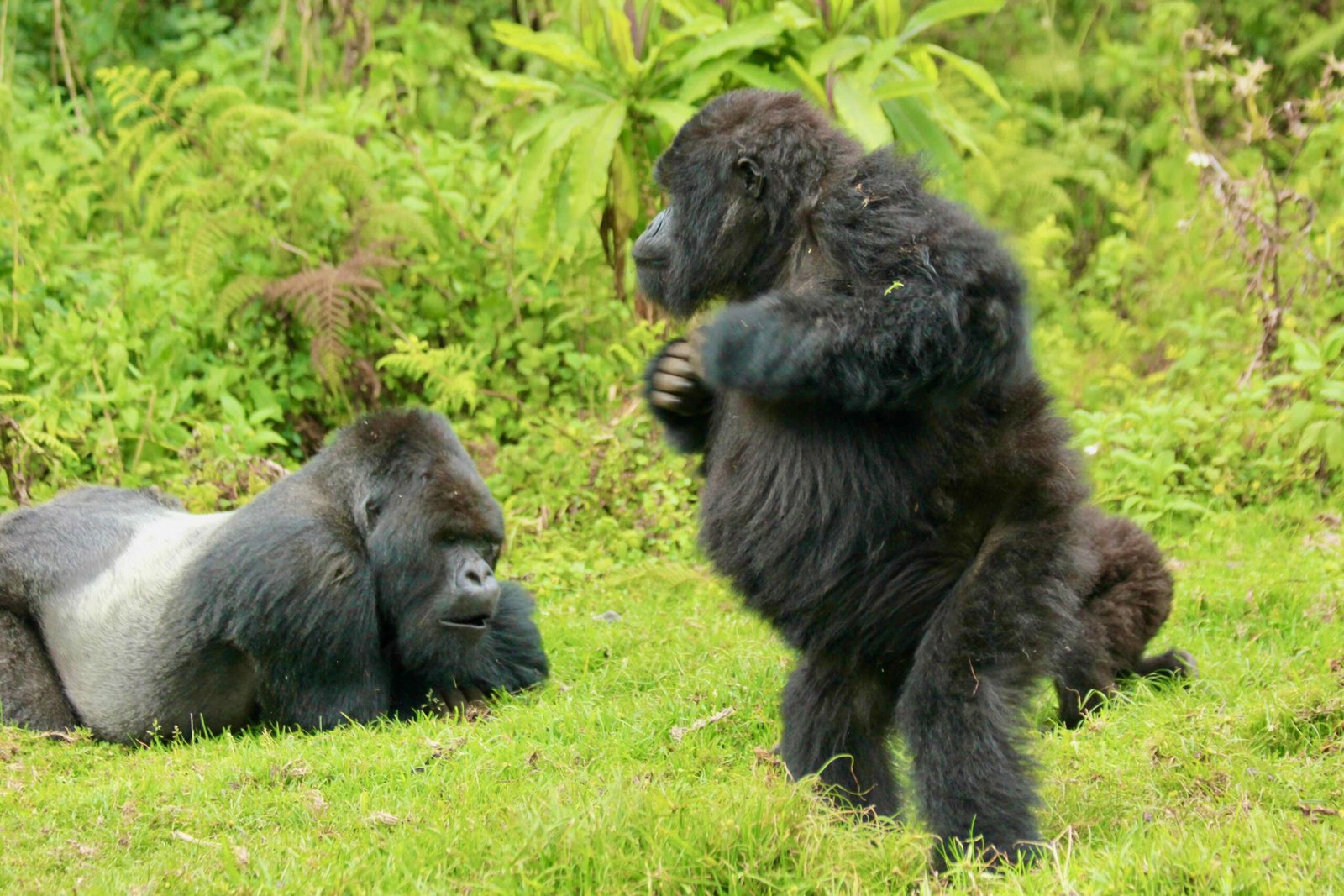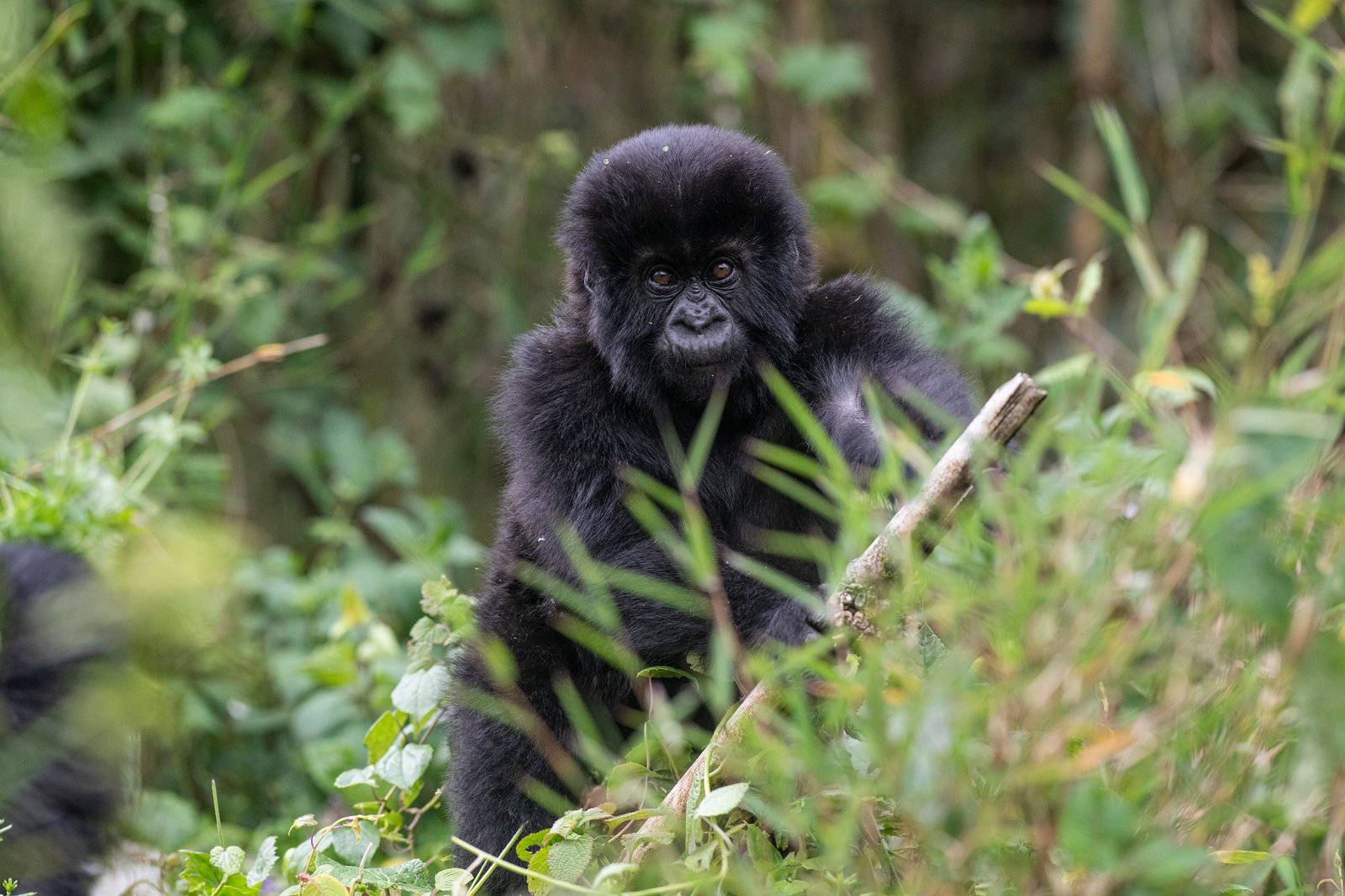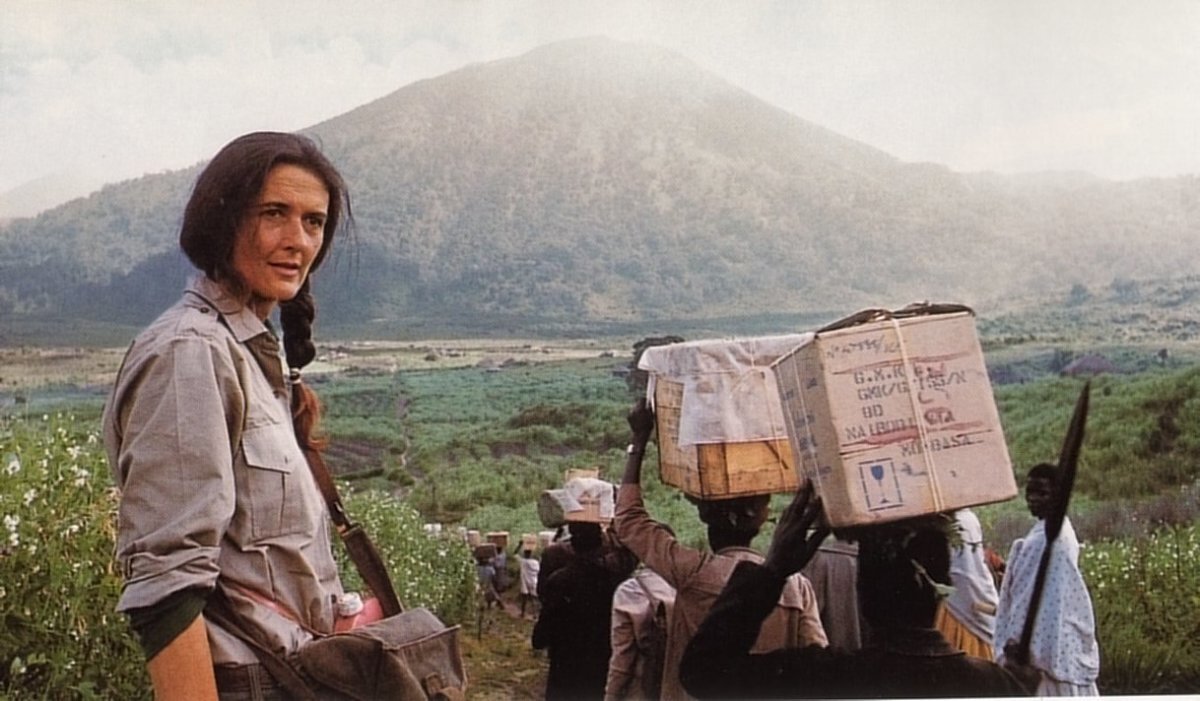A Rwanda Gorilla Trek is the ultimate wildlife experience, offering an up-close encounter with endangered mountain gorillas in their natural habitat. Located in northwestern Rwanda, Volcanoes National Park is a premier destination for gorilla trekking, situated at an altitude ranging from 2,400 to 4,507 meters above sea level. The park is part of the Virunga Massif, a transboundary conservation area shared with Uganda and the Democratic Republic of Congo. This lush, mist-covered rainforest is home to the rare mountain gorillas (Gorilla beringei beringei), one of the two subspecies of the eastern gorilla, making it one of the few places in the world where travelers can observe these incredible primates in the wild.
Gorilla trekking in Rwanda is a seamless and rewarding experience, thanks to the country’s modern infrastructure and commitment to sustainable tourism. A gorilla trekking permit, priced at $1,500, supports conservation efforts and local communities, making it a meaningful investment in preserving this critically endangered species. (Book Gorilla Permits). With Go Safaris Africa, you’ll benefit from knowledgeable guides and access to top-notch accommodations, ensuring a comfortable and enriching journey. With its stunning landscapes, vibrant culture, and accessibility, Rwanda stands out as the premier destination for gorilla trekking in Rwanda. Let the adventure begin as you explore the wonders of Volcanoes National Park and connect with the extraordinary mountain gorillas.
Rwanda Gorilla Trek - Mountain Gorilla (Gorilla beringei beringei) – Characteristics, Habituation, and Diet
Characteristics of Mountain Gorillas
The mountain gorilla (Gorilla beringei beringei) is a subspecies of the eastern gorilla and is known for its robust build, thick fur, and incredible strength. Adapted to the cold mountainous regions of Volcanoes National Park, their dense black fur helps them withstand high-altitude temperatures, often ranging from 2,400 to 4,500 meters above sea level. Adult males, known as silverbacks, can weigh up to 220 kg (485 lbs) and stand about 1.4 meters tall when upright. They are highly intelligent, displaying complex social behaviors and strong familial bonds within their groups.
Mountain gorillas are social primates, living in stable groups led by a dominant silverback who protects the family, makes decisions, and mediates conflicts. The groups include females, juveniles, and young males, all of whom rely on the leadership of the silverback. Communication is key within their social structure, with vocalizations, body postures, and facial expressions playing a crucial role in group interactions.

Habituation Process
The habituation of mountain gorillas is a carefully controlled process that allows them to become accustomed to human presence without feeling threatened. This process, which takes about two to three years, is conducted by expert researchers and park rangers who gradually introduce themselves to the gorilla groups. By maintaining a safe distance and mimicking gorilla behaviors, researchers gain the trust of these primates. Once a gorilla family is fully habituated, they can be visited by tourists as part of regulated Rwanda Gorilla Trek experiences. The process ensures that human interactions remain non-intrusive and contribute to conservation efforts through tourism revenue.
Diet and Feeding Habits
Mountain gorillas are primarily herbivores, consuming a diverse diet of over 100 plant species found in Volcanoes National Park. Their diet consists mainly of leaves, stems, shoots, roots, and fruits, with occasional consumption of small invertebrates such as ants and termites. Silverbacks play a crucial role in leading their groups to abundant food sources, ensuring the survival of the family. Given their large body size, mountain gorillas spend much of their day foraging, consuming up to 30 kg (66 lbs) of vegetation daily. Their diet is vital for maintaining their strength and energy levels, especially in the challenging mountainous terrain they inhabit.
Facts About Mountain Gorillas (Gorilla beringei beringei) - Rwanda Gorilla Trek
They Only Live in High-Altitude Forests
Mountain gorillas are found exclusively in the Virunga Massif (spanning Rwanda, Uganda, and the Democratic Republic of Congo) and Bwindi Impenetrable National Park in Uganda. They thrive in elevations ranging from 2,400 to 4,500 meters, where their thick fur protects them from the cold.
Gorilla beringei beringei Share 98% of Their DNA with Humans
Like their primate cousins, chimpanzees and bonobos, mountain gorillas share about 98% of their DNA with humans. This genetic similarity makes them highly intelligent, capable of using tools, showing emotions, and forming deep social bonds.
A Silverback Leads the Group
Mountain gorillas live in family groups led by a dominant male known as a silverback, named for the patch of silver hair that develops on its back as it matures. The silverback is responsible for protecting the group, making key decisions, and maintaining order.
They Are One of the World’s Most Endangered Apes
Despite ongoing conservation efforts, mountain gorillas remain critically endangered due to habitat loss, poaching, and disease transmission from humans. However, conservation programs and eco-tourism, such as Rwanda Gorilla Trek experiences in Volcanoes National Park, have significantly contributed to their population recovery.

Gestation Period of Mountain Gorillas
The gestation period of a mountain gorilla (Gorilla beringei beringei) is about 8.5 months (≈257 days), similar to that of humans. Female gorillas typically give birth to one infant at a time, though twins can occasionally occur. Newborn gorillas weigh around 1.8 to 2 kg (4 lbs) and are highly dependent on their mothers for care and protection.
Mountain gorilla mothers nurse their infants for about 3 to 4 years, during which time they develop essential survival skills. Female gorillas typically give birth every 4 to 6 years, leading to slow population growth, which makes conservation efforts crucial for their survival.
History of the Mountain Gorilla (Gorilla beringei beringei)

Captain Robert von Beringe
Mountain gorillas (Gorilla beringei beringei) were first scientifically documented in 1902 by German officer Captain Robert von Beringe while on an expedition in the Virunga Mountains. His discovery led to increased interest in these primates, but unfortunately, it also marked the beginning of human threats to their survival, including habitat destruction and poaching.
Dian Fossey: The Gorilla Conservation Pioneer
Dian Fossey was an American primatologist who dedicated her life to studying and protecting mountain gorillas (Gorilla beringei beringei). In 1967, she founded the Karisoke Research Center in Volcanoes National Park, Rwanda, where she conducted groundbreaking research on gorilla behavior. A fierce anti-poaching advocate, she faced strong resistance but raised global awareness through her book Gorillas in the Mist. Tragically, she was murdered in 1985, but her legacy lives on through the Dian Fossey Gorilla Fund, ensuring the continued protection of mountain gorillas and enabling Rwanda Gorilla Trek experiences today.


Ellen DeGeneres Campus of the Dian Fossey Gorilla Fund
The Ellen DeGeneres Campus of the Dian Fossey Gorilla Fund is a state-of-the-art conservation and research facility located near Volcanoes National Park, Rwanda. Opened in 2022, the campus was funded through a generous donation from Ellen DeGeneres and her wife, Portia de Rossi, in honor of Dian Fossey’s legacy.
This eco-friendly center serves as a hub for gorilla conservation, scientific research, education, and community engagement. It supports the Dian Fossey Gorilla Fund's mission to protect mountain gorillas (Gorilla beringei beringei) and their habitat, further enhancing conservation efforts and sustainable Rwanda Gorilla Trek tourism.
Precautions for Trekkers Visiting Mountain Gorillas
When participating in a Rwanda Gorilla Trek, it is important to follow strict guidelines to ensure both visitor safety and the well-being of the gorillas. Since mountain gorillas are endangered and closely related to humans, they are highly susceptible to stress and disease. Below are the key precautions trekkers should take
Go Gorilla Trekking in Rwanda
A Rwanda Gorilla Trek is an extraordinary adventure, and having the right gear will enhance your experience. Whether trekking in dry or wet conditions, being well-prepared ensures a safe and enjoyable journey with Go Safaris Africa as you encounter the majestic mountain gorillas of Volcanoes National Park.

